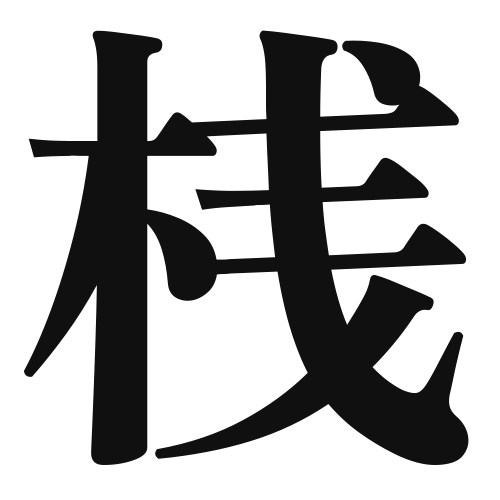1. Overview of Meaning
The kanji “桟” (san) refers to a type of platform or scaffold, often used in the context of a wooden structure or a support for something. It can also imply a place where people can gather or rest.
2. Formation and Radical
Formation of the Kanji: The kanji “桟” is a compound character (会意文字) that combines elements to convey its meaning. It consists of the radical for “tree” (木) and the phonetic component “讃” (san), which contributes to its pronunciation.
Radical: The radical of “桟” is “木” (tree), indicating its connection to wood and wooden structures.
3. Examples of Usage
Common Words and Phrases: Some common words that include “桟” are “桟橋” (sanbashi – pier) and “桟敷” (sanjiki – a raised platform for seating).
Example Sentence in Daily Conversation: “私たちは桟橋で釣りをしました。” (Watashitachi wa sanbashi de tsuri o shimashita – We went fishing at the pier.)
4. Synonyms and Antonyms
Similar Kanji: A similar kanji is “台” (dai), which also refers to a platform or stand but can imply a more general base or support structure.
Opposite Meaning Kanji: An antonym could be “穴” (ana – hole), which represents an opening or void, contrasting with the idea of a supportive structure.
5. Cultural and Historical Background
Connection to Japanese Culture: In Japanese culture, “桟” is often associated with traditional wooden structures, such as temples and shrines, where platforms are used for ceremonies and gatherings.
Proverbs and Idioms: While there may not be specific proverbs that directly use “桟,” the concept of support and gathering is prevalent in many cultural expressions, emphasizing community and togetherness.
